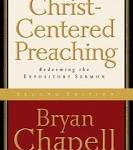How to begin a sermon

I’m afraid that many of our hearers would respond to the title of this post by pleading, “Please don’t!”
To be sure, if preachers are brave (or foolhardy) enough to think that they have something worthwhile to say, then they are going to have to work hard during the first 30 seconds of the message if they hope to take any of their hearers with them.
As usual, Bryan Chapell offers sound advice.
Purposes of introductions
To arouse interest in the message. We cannot assume that our hearers share our own interest in the message. “Please turn in your Bibles to…” and then launch straight into the exegesis, may work for some audiences, but for most we have to work harder to grab their attention, so that they will want to come with us into the body of the message. We should aim to involve our hearers, by engaging their imaginations, their sense of wonder, their compassion, and so on.
To introduce the subject of the message. An introduction that arouses interest but has nothing to do with the content of the message is a false lead. A joke whose only purpose is to endear the speaker to the audience is manipulative, and is likely to reduce, rather than increase, trust. Still, the subject of the sermon may legitimately be introduced by a question, a story, a quotation, a statistic, a provocative assertion, or any of a number of other ways, providing that the introduction does actually introduce the subject-matter of the message.
To make the subject personal. ‘An introduction,’ says Chapell, ‘is a preacher’s handshake of good intent.’ It communicates the preacher’s concern for the hearers, and helps them to understand why the sermon will address their need (which Chapell calls the ‘fallen condition focus’. Preachers are often skilled at using introductions to indicate what the sermon is about, but less skilled at explaining why people need to listen.
An aside: Randall Pelton agrees with this. He argues that it’s not enough for the preacher’s introduction merely arouse attention and interest. It must answer the questions, Why do we need to hear this sermon? and How will it help us to become (better) Christians? In anticipating such questions, the preacher will show how the Bible exposition will be relevant, and how it will lead to worship. In fact, such an introduction will kick-start the process of application, which otherwise might be left until the end of the sermon.
To prepare for the proposition. A sermon’s proposition – both its concepts and its terminology – grows out of the introduction and states the purpose of the message.
Types of introductions
Human-interest account. A brief story – real or fictional – of some human experience with which the hearers can identify.
Simple assertion. If the subject of the sermon is of immediate interest or concern to the hearers, then the preacher may be able to begin with, “This morning I’m going to talk to you about…”
Startling statement. This is designed to jolt a congregation to attention. [Chapell gives several helpful examples. One approach that I have tried occasionally is to make a statement that is the exact opposite of what the congregation is expecting to hear, and only at the end reveal that this is the opinion of some sceptic.] Such ‘surprise statements’ should be used sparingly, however.
Provocative question. Such a question may provoke thought or stimulate unvoiced discussion with the audience.
Catalogue. Listing items, ideas or persons may helpfully reveal the main concept of the sermon. The preacher might list, for example, the kinds of people who need to hear the message which is to follow: the domineering father, the working mother, the rebellious teenager, and so on.
Other options include ‘interesting quotations, striking statistics, biblical accounts with contemporary descriptions, correspondence excerpts, parables, familiar or pithy poetry, object lessons.’
Chief offenders include those introductions that launch straight into the historical background of the text. Chapell quotes William Hogan: ‘“In this difficult passage the sacred writer refers to a long-forgotten custom of the Moabites.” This, we can agree, is not likely to persuade anyone that here is a message God wants me to hear today.
As a rule, then, do not begin with the text; begin with the audience. If you must sketch in the historical background, look for ways to contemporise it so that people can identify with the biblical situation.
Cautions for introductions
If introducing the Scripture reading itself, then the preacher might either offer some brief background or explanatory comment, or create a longing for the word. Either way, the hearers are prepared to hear the text speak to them.
Sermon introductions should be brief, focused, conversational, specific, carefully prepared, and confident. Although you may rightly feel profoundly inadequate to your task, don’t apologise, for ‘the outset of a sermon is no time to prejudice a congregation against you, your message, or the potential of the Holy Spirit to work in spite of human weakness.’
Based on:- Chapell, B. (2005). Christ-centered preaching: redeeming the expository sermon (Second Edition, pp. 236-254). Grand Rapids, MI: Baker Academic.
